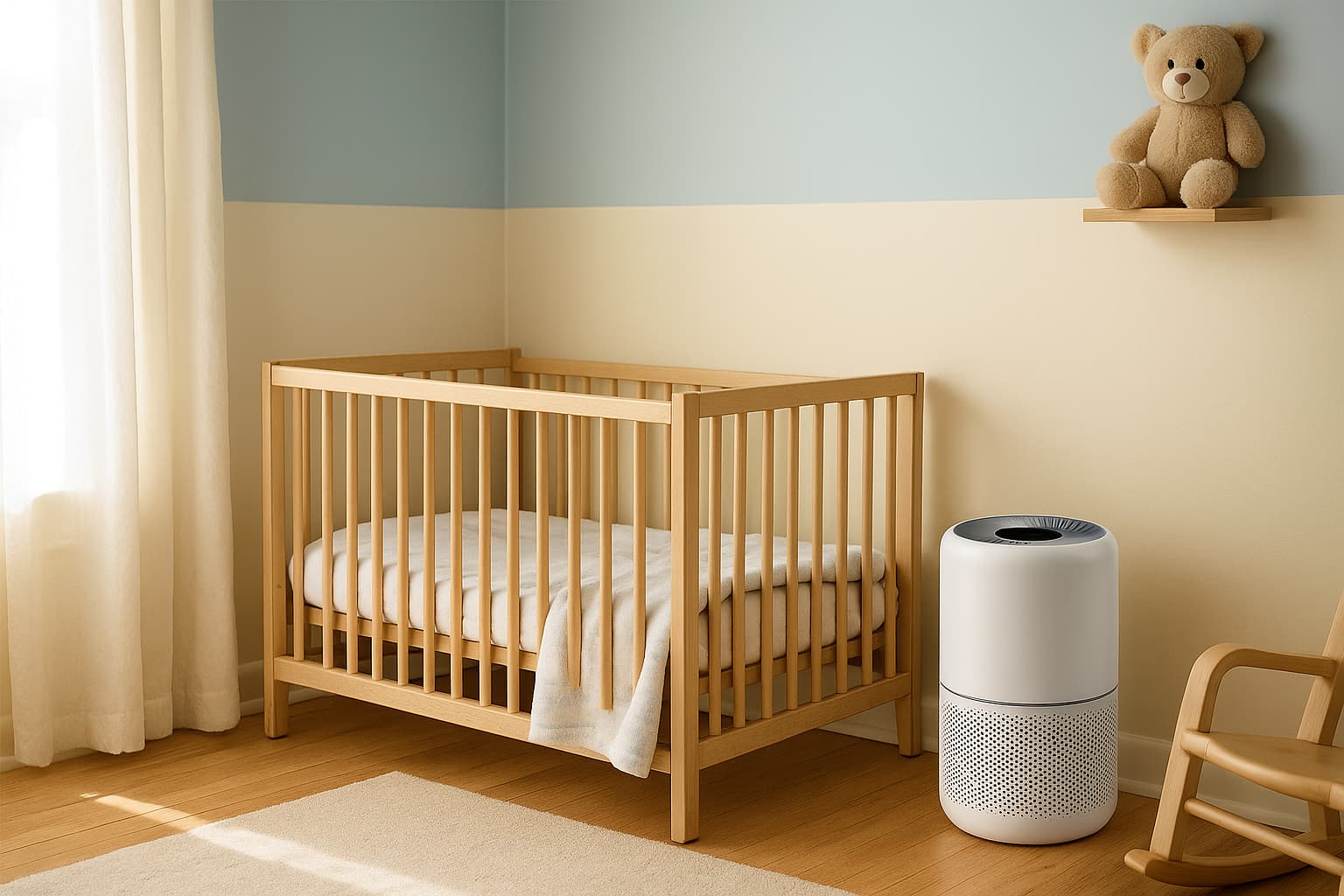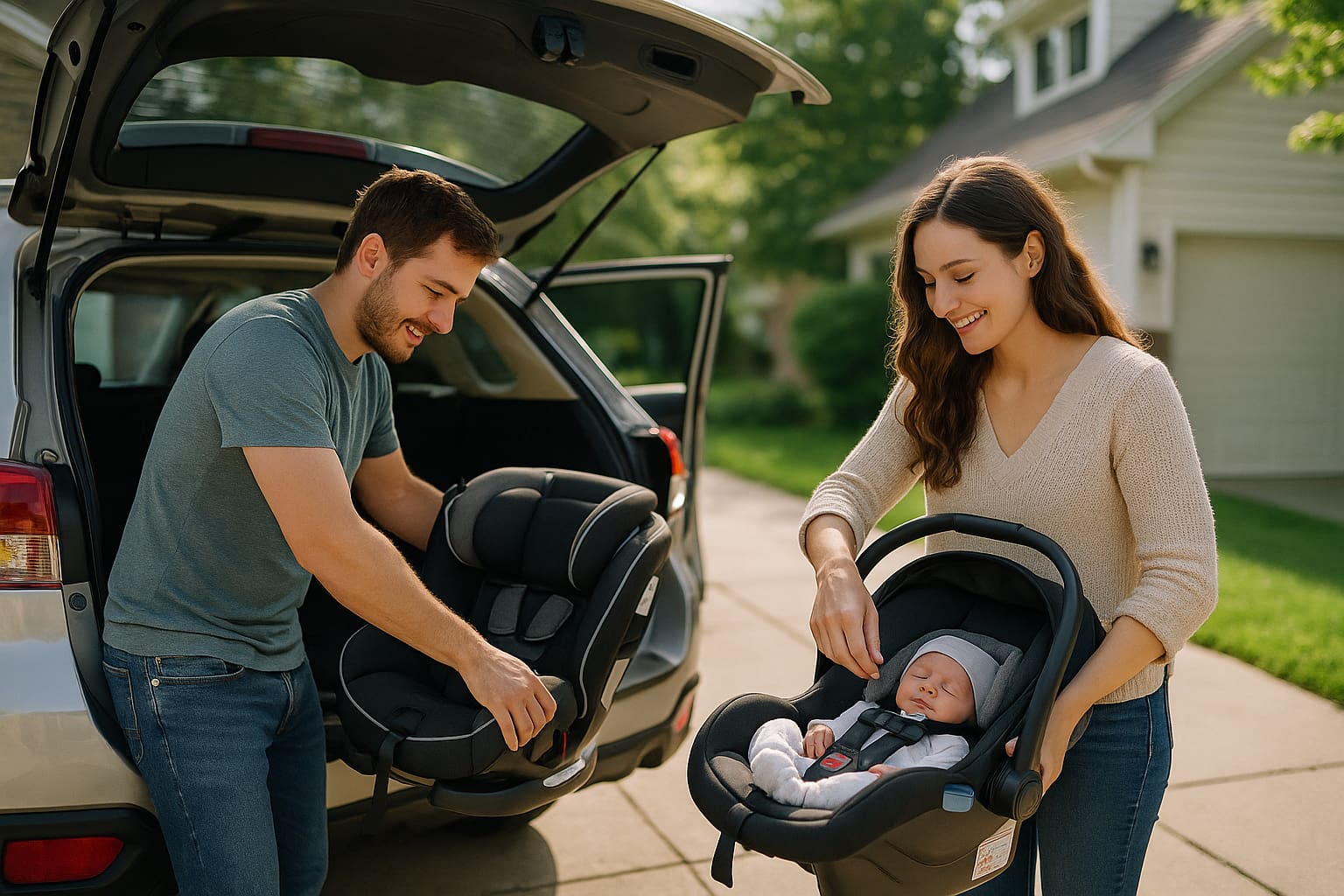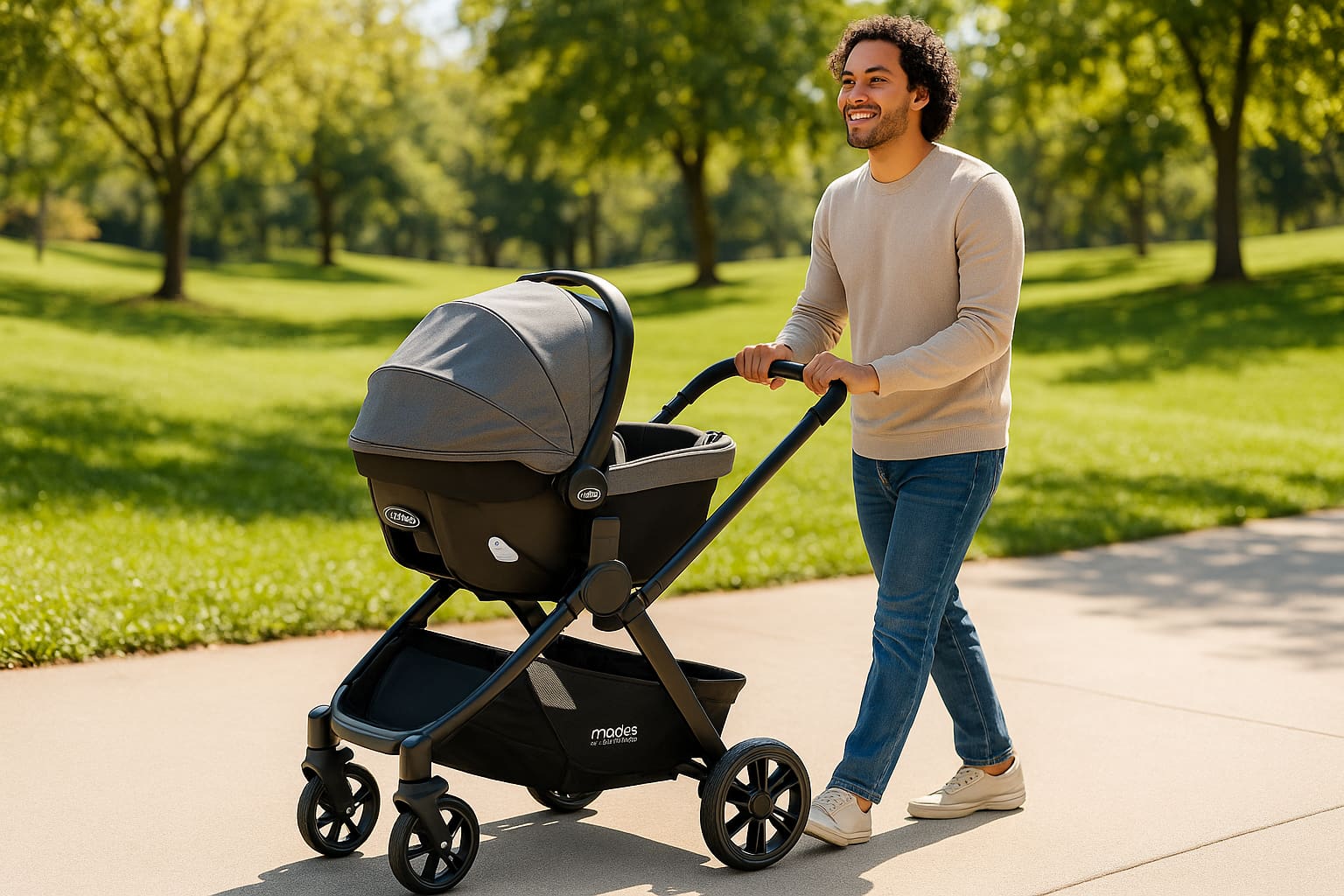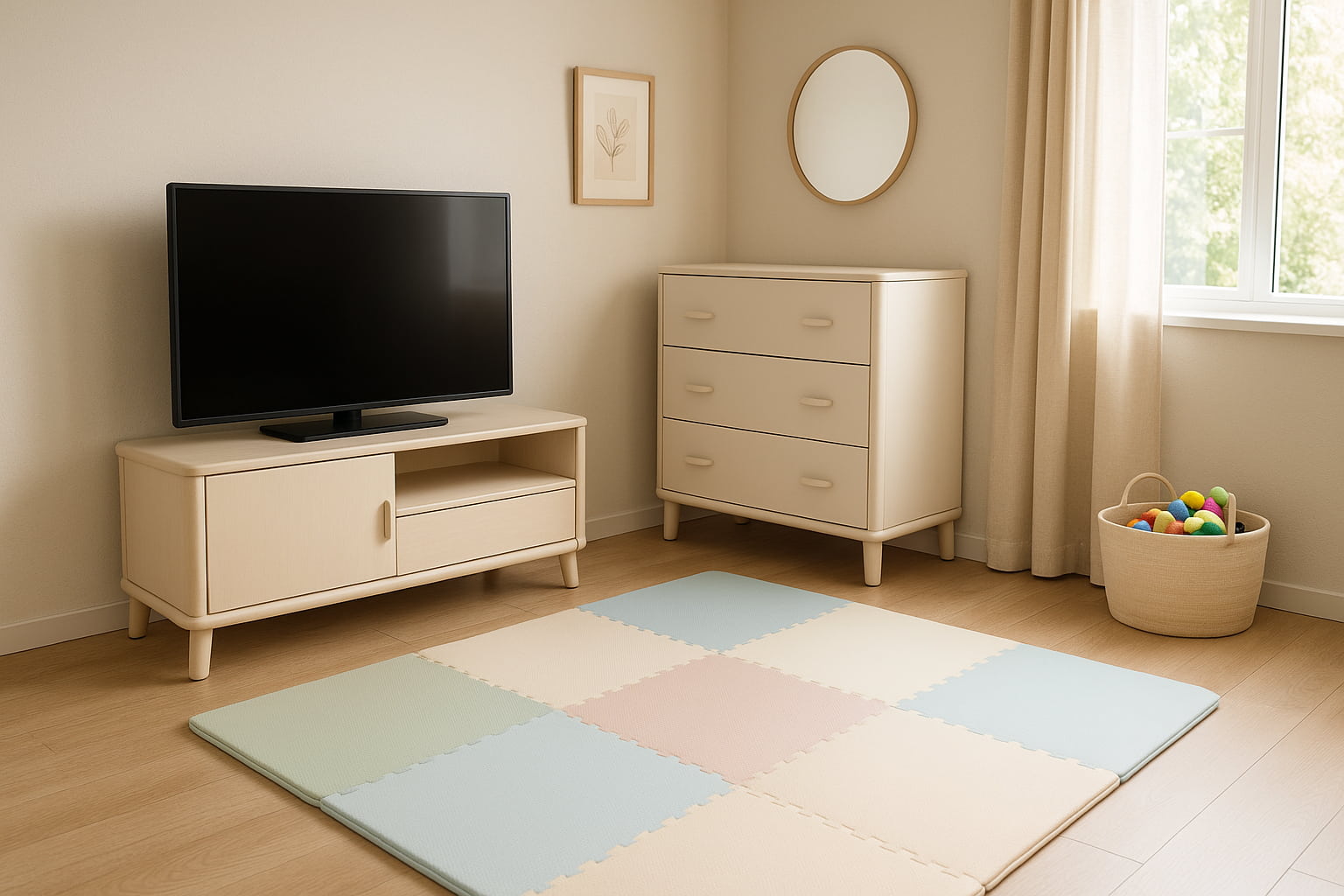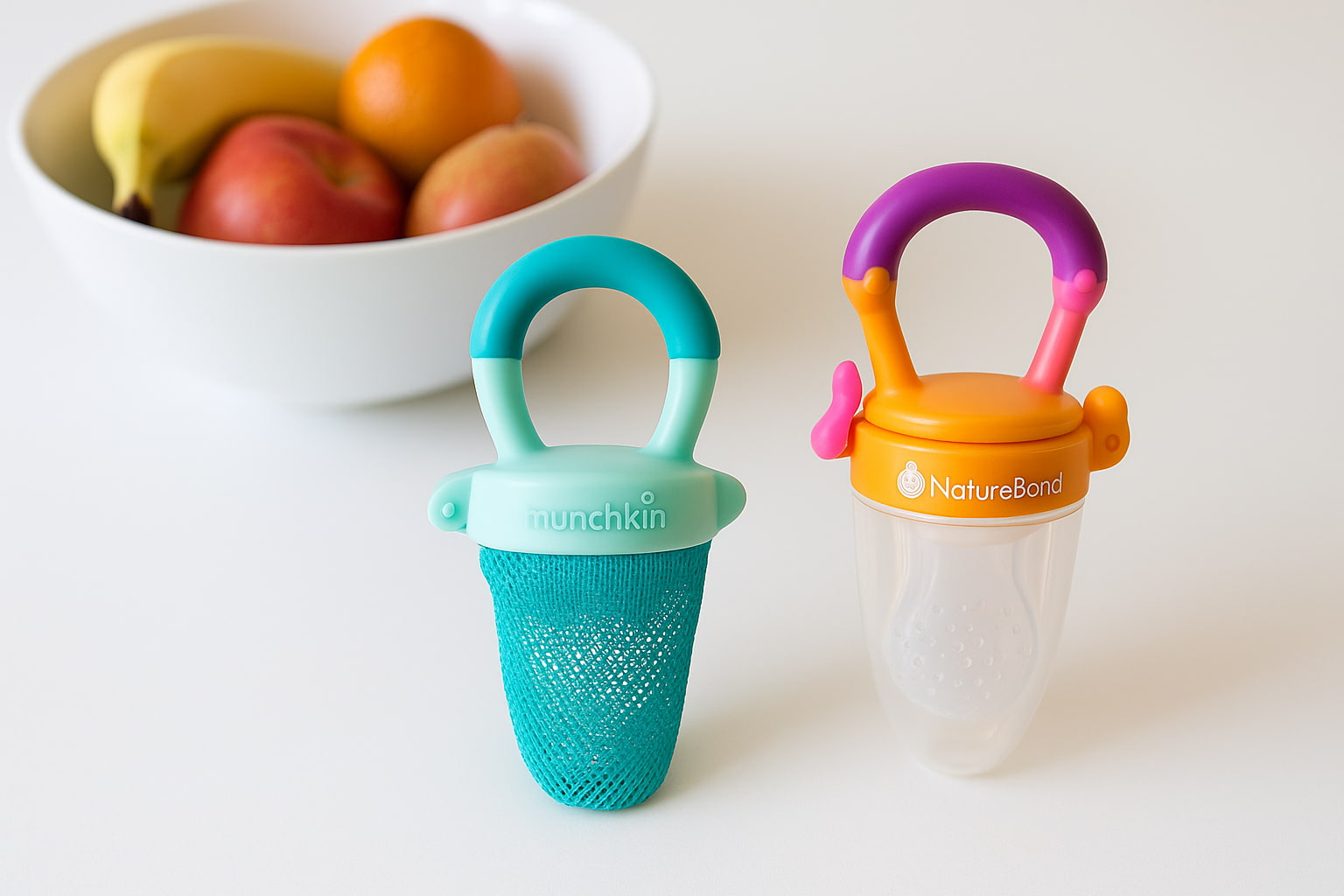🏡 Why Baby-Proofing Electrical Hazards Matters
Hey there, new parent! 👶 Cabinet locks, baby gates, and outlet covers are likely already on your mind. But let’s talk about something just as urgent, baby-proofing electrical and fire hazards.
According to the CDC, over 2 million kids get injured at home every year. A surprising number of those accidents involve outlets, cords, and appliances. Things like overloaded sockets and loose cords often go unnoticed until something bad happens.
🧠 Quick Stats to Know:
So let’s walk through exactly how to protect your home and why it matters so much.
🔍 Common Electrical & Fire Hazards You Might Be Missing
Here’s a quick overview of where trouble usually hides:
✅ Pro Tip: Always check under rugs, behind furniture, and in outlets near the floor. That’s exactly where tiny hands go first!
💡 Check as well: Best Outlet Covers for Baby Safety in 2025
🛠️ Easy Ways to Baby-Proof Electrical Hazards
Start simple and scale up. The best tools and guidance are listed below:
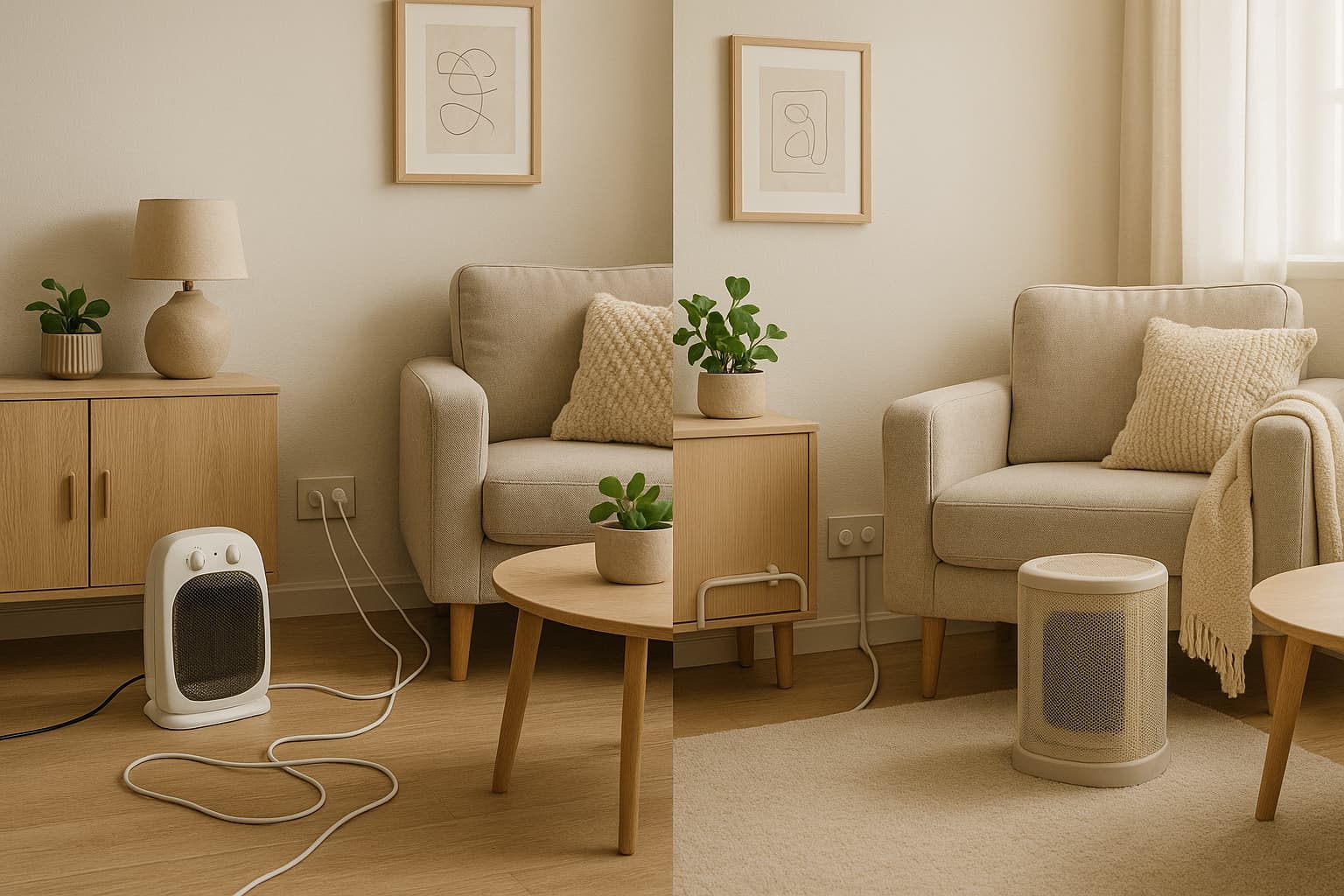
1. Use Outlet Covers or Plates
2. Secure Power Strips & Surge Protectors
3. Anchor or Move Heat-Emitting Devices
🔗 External resource: Electrical Safety Tips for Kids – NFPA
🧠 Why Babies Are Drawn to Electrical Stuff
You might wonder why your child always goes straight for the cords, right? It’s because:
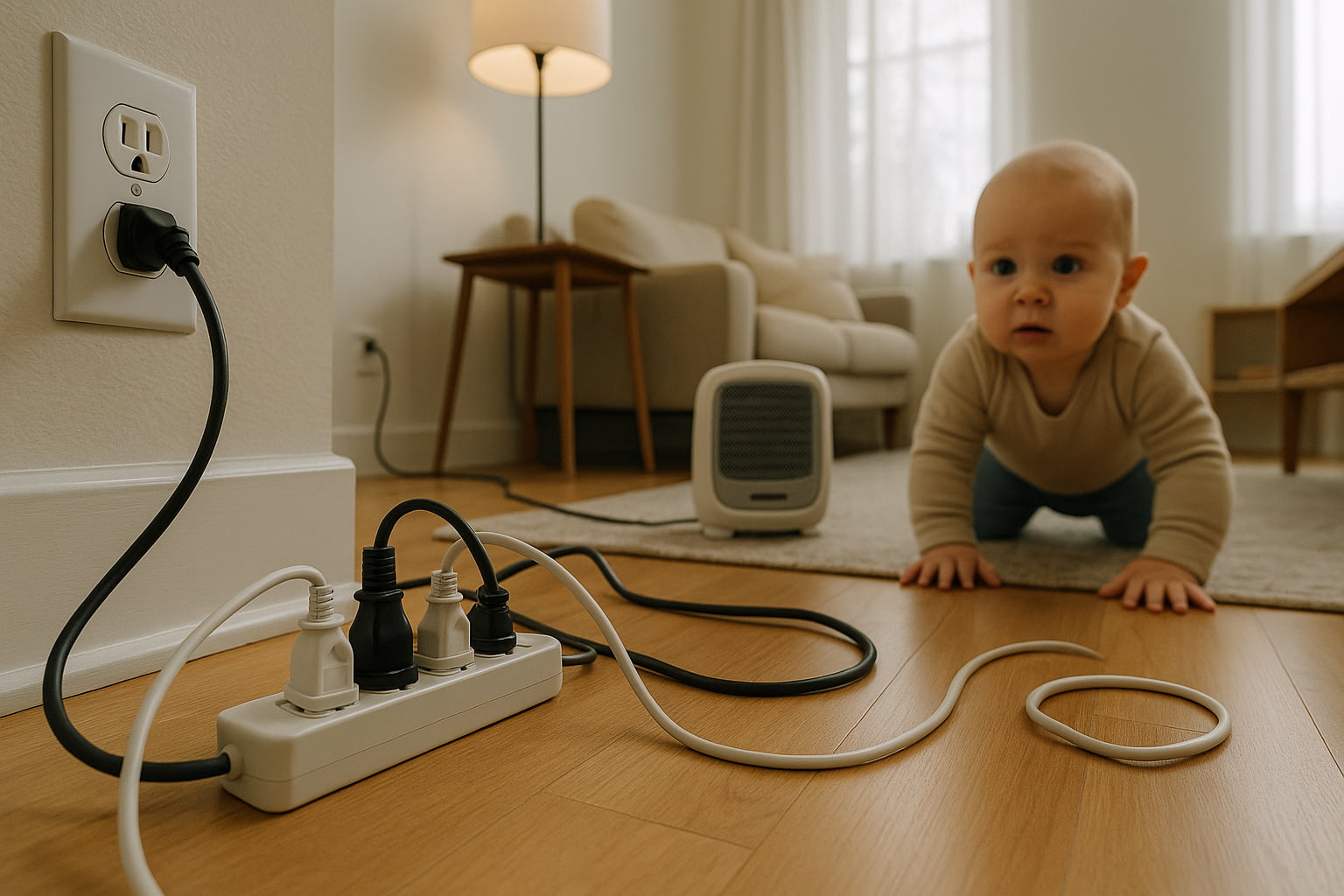
That’s why prevention is everything.
📦 Best Babyproofing Products for Electrical Safety
Here are some reliable go-to products you can look into:
💡 For more: Review: Safety 1st Plug Protectors
🔥 Fire Safety Tips for Babyproofing Homes
Fire hazards don’t get as much attention, but they should.
🛠 Install a fire-resistant outlet box for extra peace of mind.
💡 Also see: Top Tips on Fireproofing Homes with Babies
📅 When to Start Baby-Proofing These Areas
Don’t wait until your baby is crawling, start early. Aim to complete your electrical and fire hazard proofing around 5–6 months of age.
As your baby begins to crawl, pull up, and explore, you’ll be glad you prepared.
💬 Real Parent Insight
“We thought we had everything covered until our toddler tried plugging in the vacuum. Now we double-check every outlet!”
Little things you fix today can prevent big problems tomorrow.
✅ Final Thoughts: Safety Starts Where You Least Expect It
Babyproofing isn’t just about visible risks. Electrical and fire hazards are silent but dangerous and easier to fix than you might think.
Take a walk around your home today. Spot the risks. Make a plan. Your baby’s safety is worth every second.
📖 Frequently Asked Questions
When should I start baby-proofing electrical outlets?
Ideally, before your baby starts crawling around 5 to 6 months of age.
Are outlet plug covers safe to use?
Not always. It’s safer and more harder for babies to remove sliding outlet covers or plates.
Can I babyproof without hiring an electrician?
Yes! Most solutions like outlet covers, cord boxes, and safety kits are DIY-friendly.
What’s the biggest electrical risk for toddlers?
Exposed outlets and loose cords are the most common and dangerous hazards.
Do I need to babyproof every room?
Focus on high-use areas first like the living room, nursery, and kitchen then expand.
✍️ By Find For Baby
This article is part of Find For Baby’s trusted parenting guide series. Our goal is to provide research-backed, practical advice that helps families create safer, happier homes.
📘 Disclaimer
This content is for informational purposes only. Always consult safety professionals or electricians when making changes to electrical setups in your home.


